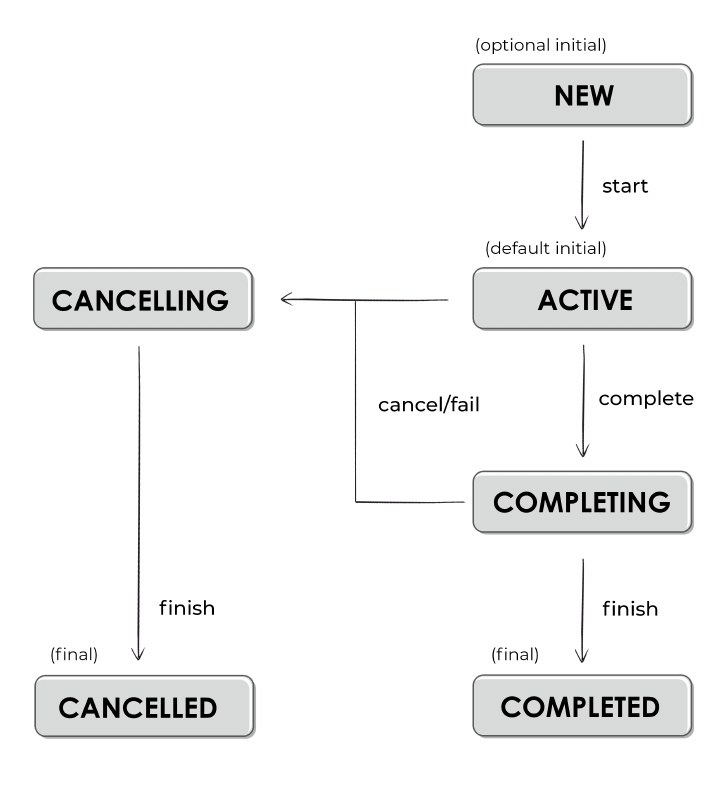Job states

In the “Active” state, a job is running and doing its job. If the job is created with a coroutine builder, this is the state where the body of this coroutine will be executed. In this state, we can start child coroutines. Most coroutines will start in the “Active” state. Only those that are started lazily will start with the “New” state. These need to be started in order for them to move to the “Active” state. When a coroutine is executing its body, it is surely in the “Active” state. When it is done, its state changes to “Completing”, where it waits for its children. Once all its children are done, the job changes its state to “Completed”, which is a terminal one. Alternatively, if a job cancels or fails when running (in the “Active” or “Completing” state), its state will change to “Cancelling”. In this state, we have the last chance to do some clean-up, like closing connections or freeing resources (we will see how to do this in the next chapter). Once this is done, the job will move to the “Cancelled” state.
| State | isActive | isCompleted | isCancelled |
|---|---|---|---|
| New (optional initial state) | false | false | false |
| Active (default initial state) | true | false | false |
| Completing (transient state) | true | false | false |
| Cancelling (transient state) | false | false | true |
| Cancelled (final state) | false | true | true |
| Completed (final state) | false | true | false |
Backlinks